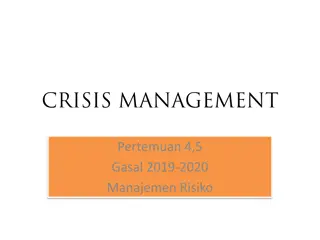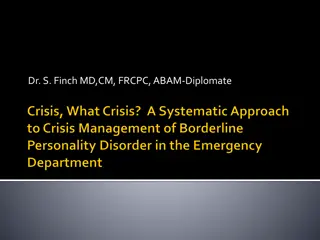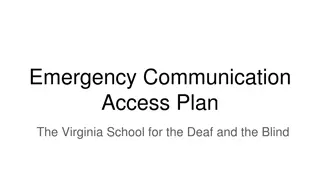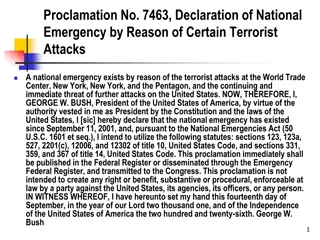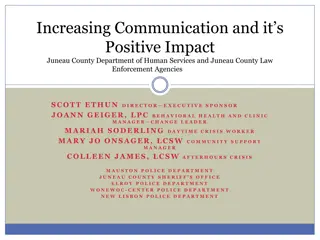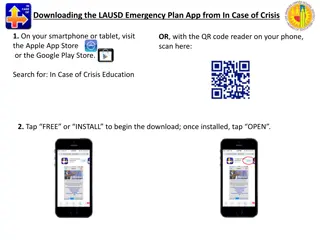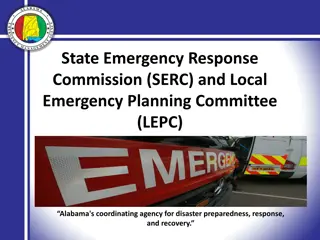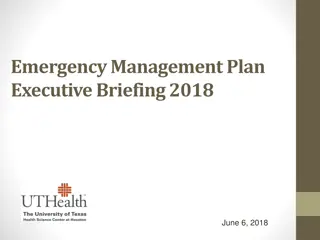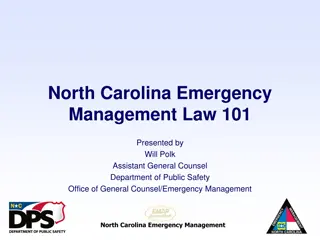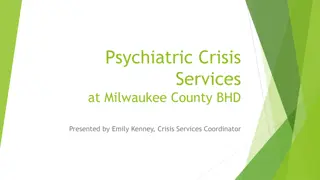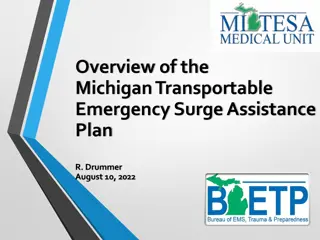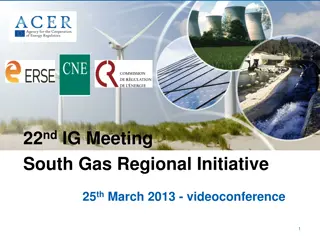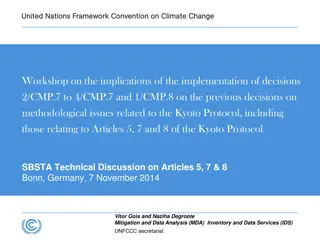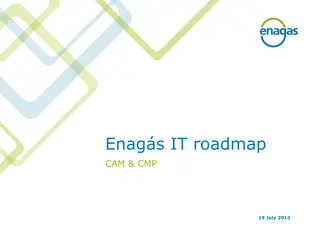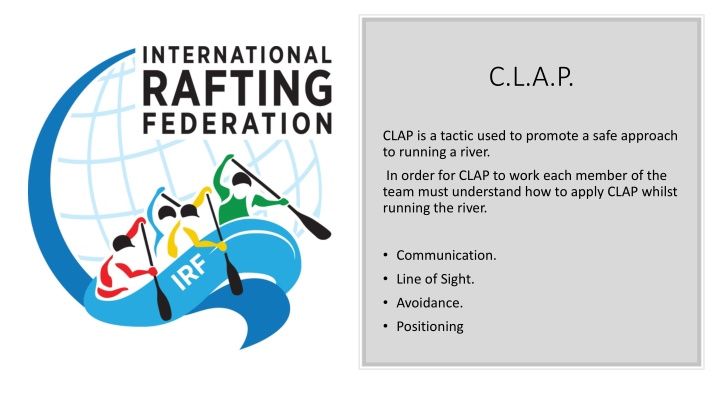
Developing Your CMP School Crisis Emergency Management Plan
A comprehensive guide focusing on important considerations, information needed for completion, setting up the CMP, outline aligning with emergency management phases, and legal authority in developing a school crisis, emergency management, and medical emergency response plan.
Download Presentation

Please find below an Image/Link to download the presentation.
The content on the website is provided AS IS for your information and personal use only. It may not be sold, licensed, or shared on other websites without obtaining consent from the author. If you encounter any issues during the download, it is possible that the publisher has removed the file from their server.
You are allowed to download the files provided on this website for personal or commercial use, subject to the condition that they are used lawfully. All files are the property of their respective owners.
The content on the website is provided AS IS for your information and personal use only. It may not be sold, licensed, or shared on other websites without obtaining consent from the author.
E N D
Presentation Transcript
C.L.A.P. CLAP is a tactic used to promote a safe approach to running a river. In order for CLAP to work each member of the team must understand how to apply CLAP whilst running the river. Communication. Line of Sight. Avoidance. Positioning
Communication Good communication is a key factor to anything we do in life. When on the river communication can be split into 2 key areas. 1. Pre trip communication. 2. Communication between the group as you move down the river.
Communication (Pre trip) Clear communication between the group members before a river trip will ensure that the group have a clear understanding of the task ahead. An informal or formal pre trip discussion could mention the following points Group numbers & head count Medical conditions & medications Trip length & grading with any river specific info (portages, timings, etc.) Group ability & experience (Trip Leader/ most experienced paddlers) Group equipment - who has: first aid kit, pin kit, phone, spare paddle, etc. Back up plans incase of an emergency/ evacuation points Communication whilst on the river (signals)
Communication whilst on the river signals Agreeing on a set of signals that the whole group can use & understand will make life easier when on the river. The signals should include as a minimum. Stop / Go Eddy out Go left/ Go right First aid Ok Audio signal (whistle blasts)
Line of Sight Line of sight relates to 2 areas. 1. It is good practice to try and keep line of sight with the boat in front and behind you. This way each member of the group can maintain visual contact with each other in order to enhance group safety & Control. 2. Always try to leave an eddy between you and the end of your line of sight. This theory works really well if you are paddling a new river. You may choose the eddy to brief the group members as what the next move maybe. You may choose to exit the river from the eddy to scout or portage a rapid. If you cannot see down a rapid you do not know scouting is advisable. Never put your body into a place where your mind has not been to first
Avoidance Avoidance simply relates to avoiding any issues or obstacles in order to increase the over all trip safety. Examples of Avoidance could be: Group / Human factors such as: weak swimmers/ non rollers, using the correct clothing & personal protective clothing for the water temperature, pre trip communication / briefing. Environmental factors such as: river hazards strainers, big stoppers, sieves, syphons, undercuts, day length, portages, wildlife / private land.
Positioning Positioning relates to your position within the group to ensure your maximum effectiveness to the group. Some simple questions you should be asking yourself as you paddle down the river are. 1. Am I in a clear position to see the boat in front and behind me ? 2. Am I in a clear place to see, receive & give any signals to other group members? 3. Do I have a good line of sight down the river is there an eddy between me and the end of my line of sight? 4. Am I positioned in a place to avoid any features or hazards that could endanger my safety or the safety of the group? 5. Am I in a position to effectively help in a rescue in case of a swimmer or flip?

